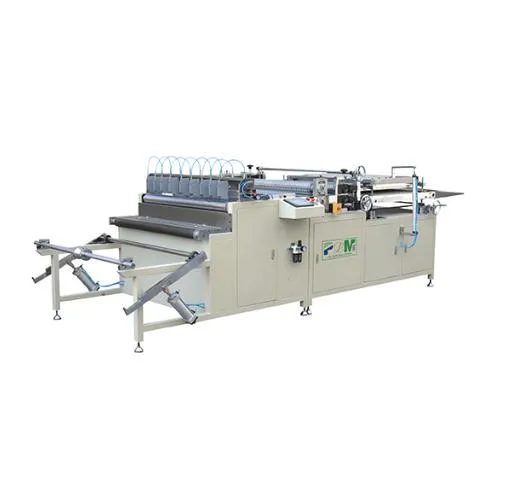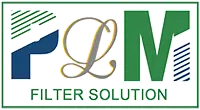Aug . 05, 2025 15:05 စာရင်းသို့ ပြန်သွားရန်
Auto Pleating Machine Setup Guide
Proper setup of an Auto Pleating Machine is crucial for achieving optimal performance in filter paper processing operations. These sophisticated machines transform flat Filter Paper into precisely folded media through automated Filter Paper Pleating processes, creating the essential components for various filtration applications. The initial configuration establishes the foundation for production quality, efficiency, and machine longevity.
Modern Auto Pleating Machines combine mechanical precision with programmable controls to accommodate diverse pleating requirements. Operators must understand the relationship between machine settings and the physical properties of the Filter Paper being processed. The thickness, fiber composition, and coating materials of the paper all influence the ideal pleating parameters. Successful Filter Paper Pleating Machine operation begins with proper installation and calibration before production commences.
This comprehensive guide walks through each critical step of the setup process, from machine positioning to final quality verification. We'll explore the specialized considerations for different paper grades, troubleshooting common setup challenges, and maintaining consistent pleat formation throughout production runs.

Preparing the Work Environment for Auto Pleating Machines
Before installing an Auto Pleating Machine, careful preparation of the workspace significantly impacts operational efficiency and safety. The ideal environment for Filter Paper Pleating operations maintains consistent temperature and humidity to prevent paper dimensional changes during processing. Concrete floors should be vibration-damped, and the area kept free of dust that could contaminate the Filter Paper Pleating Machine mechanisms.
The machine foundation must support the Auto Pleating Machine's weight plus dynamic loads during operation. Allow sufficient clearance around the machine for material handling, maintenance access, and operator movement, generally at least 1 meter on all sides.
Material staging areas should be organized to support smooth workflow:
Infeed zone for roll or sheet Filter Paper storage
Pleated output collection tables
Quality inspection stations
Temporary storage for tools and accessories
Proper lighting at both the infeed and outfeed stations helps operators monitor paper alignment and pleat formation quality throughout the Filter Paper Pleating process.
Auto Pleating Machine:Setup and Procedures
The core mechanical setup of an Auto Pleating Machine requires meticulous attention to achieve consistent Filter Paper Pleating results. Begin by verifying all machine components are properly lubricated according to the manufacturer's specifications, paying special attention to the pleating blade mechanism, paper feed rollers, and folding plates.
Critical calibration steps include:
Pleat Height Adjustment
Set the distance between upper and lower pleating plates
Verify with gauge blocks for the target pleat height
Test with sample Filter Paper and measure formed pleats
Paper Tension Control
Adjust brake tension on the paper unwind shaft
Set proper nip roller pressure
Balance tension across the web width
Alignment Verification
Check parallelism of all rollers within 0.05mm
Confirm perpendicularity of pleating blades to paper path
Alight paper guide rails to prevent sideways drift
For Filter Paper Pleating Machines handling coated media, additional considerations include:
Temperature controls for wax-impregnated papers
Static elimination systems
Specialized blade coatings to reduce adhesive buildup
Document all baseline settings for future reference, noting any variations required for different Filter Paper grades or pleat configurations. This establishes a valuable knowledge base for troubleshooting and changeovers.
Auto Pleating Machine for Optimal Performance
Modern Auto Pleating Machines feature sophisticated programmable logic controllers (PLCs) that manage the complex synchronization required for precision Filter Paper Pleating. The control system setup involves both machine parameter configuration and production recipe management.
Key programming steps include:
Motion Profile Setup
Acceleration/deceleration curves for smooth paper handling
Servo motor tuning for precise positioning
Synchronization between feed and pleating mechanisms
Production Parameters
Pleats per minute rate based on paper characteristics
Dwell time adjustments for different paper weights
Automatic length counting for batch production
Safety System Configuration
Light curtain sensitivity settings
Emergency stop logic verification
Fault detection thresholds
For Filter Paper Pleating Machines with vision systems, additional calibration includes:
Camera focus and lighting adjustment
Pleat quality inspection thresholds
Defect recognition parameters
Operators should create and save distinct programs for each standard product configuration, including all relevant parameters from mechanical settings to production speeds. This enables quick changeovers when switching between different Filter Paper types or pleat patterns.
FAQs About Auto Pleating Machine Setup
What are the most common mistakes when setting up an Auto Pleating Machine?
The most frequent setup errors include improper tension settings causing paper wrinkles, misaligned pleating blades producing inconsistent fold heights, and incorrect servo motor parameters leading to registration errors. Many operators also underestimate the importance of environmental controls - temperature and humidity variations as small as 10% can affect Filter Paper behavior during Filter Paper Pleating.
How often should we recalibrate our Filter Paper Pleating Machine?
Industrial Auto Pleating Machines should undergo full calibration every 500 operating hours or when changing to significantly different Filter Paper grades. Daily verification of pleat dimensions and monthly preventive maintenance checks help maintain accuracy between full calibrations. More frequent recalibration may be needed when processing abrasive coatings or running at maximum speeds.
Can the same Auto Pleating Machine handle different Filter Paper weights?
Quality Filter Paper Pleating Machines can accommodate a range of paper weights, but each significant change requires adjustments to tension settings, pleating blade pressure, and feed rates.
What maintenance is required after initial Auto Pleating Machine setup?
Daily maintenance includes cleaning paper dust from mechanisms, checking lubrication points, and verifying safety systems. Weekly tasks involve inspecting wear components like pleating blades and feed rollers. Monthly maintenance should include full mechanism inspection, belt tension checks, and control system diagnostics. Always follow the manufacturer's recommended schedule for your specific Filter Paper Pleating Machine model.
How do environmental factors affect Filter Paper Pleating results?
Filter Paper is hygroscopic and responds to environmental changes. High humidity causes paper to expand, potentially creating loose pleats, while low humidity makes paper brittle and prone to cracking. Temperature fluctuations affect coating viscosity and paper stiffness.
Proper setup of an Auto Pleating Machine establishes the foundation for efficient, high-quality Filter Paper Pleating operations. From the initial workspace preparation through final quality verification, each step contributes to the machine's ability to produce consistent, precision-folded filter media. The attention invested in correct Filter Paper Pleating Machine configuration pays dividends through reduced waste, fewer production interruptions, and superior end products.
Please click www.mfiltersolution.com to consult us.Action speaks louder than words.
-
Truck Air Filters Machines Operations
သတင်းAug.05,2025
-
Spin-On Oil Filter Machine Efficiency
သတင်းAug.05,2025
-
How Cabin Air Filter Machines Work
သတင်းAug.05,2025
-
High-Performance Car Air Filters
သတင်းAug.05,2025
-
Eco Oil Filter Machine Maintenance
သတင်းAug.05,2025
-
Auto Pleating Machine Setup Guide
သတင်းAug.05,2025
